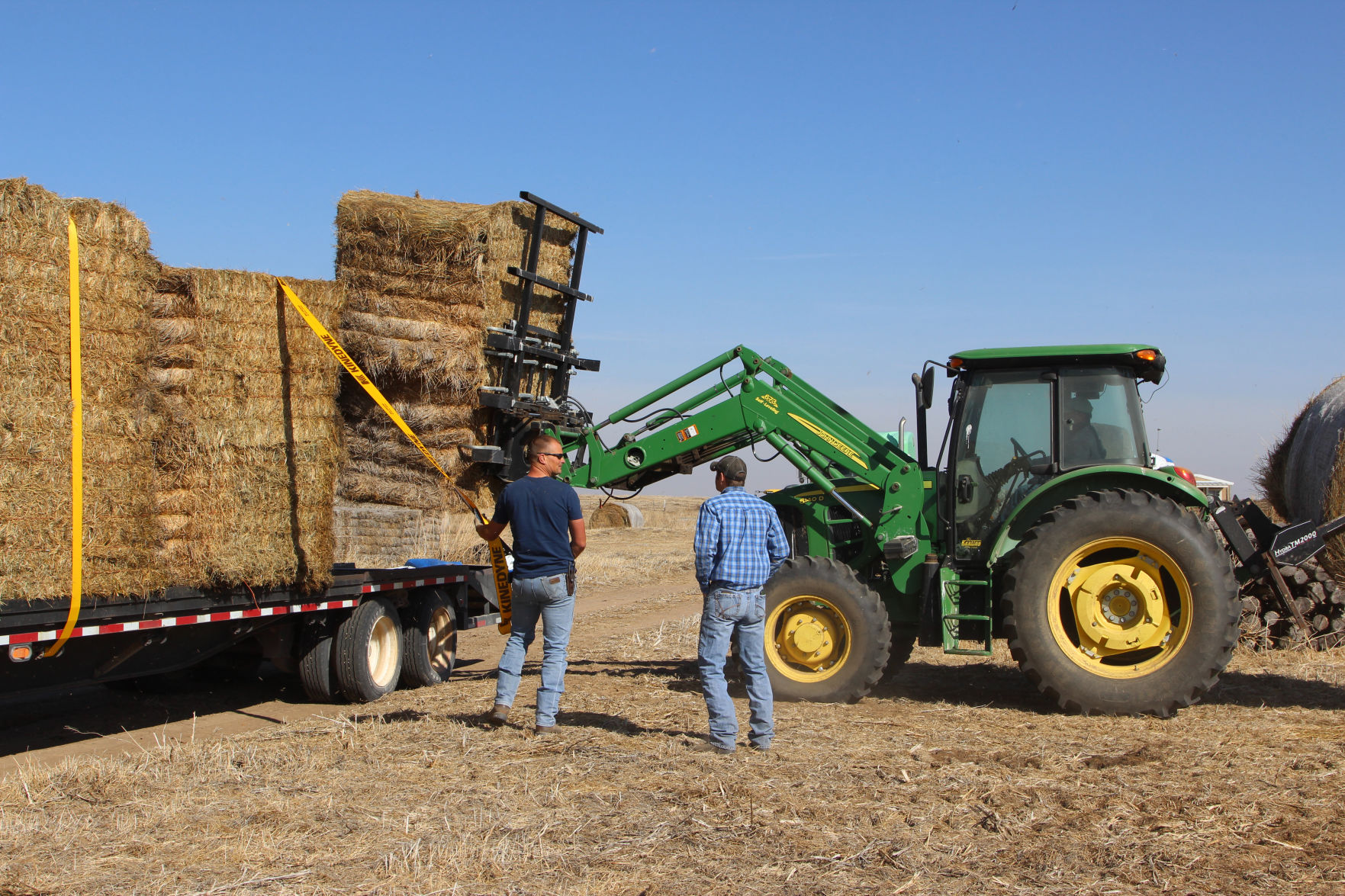In the last three years, it’s becoming a regular and much welcome sight—convoys of truckloads of hay from all across the U.S. converging on ranching communities affected by wildfires and other natural disasters.
But the Kansas Highway Patrol wants to remind drivers to be safe in their efforts.
Lt. Tony Stewart, of the Kansas Highway Patrol, has some tips for hay convoys to consider before they start out on the road under a disaster declaration.
“We’re not here, as the Kansas Highway Patrol, to act as a difficulty in this,” Stewart stressed. State Troopers have the public’s best interest at heart to help the hay move and get to the people who need it most as quickly and as safely as possible.
First, Stewart explained, a governor’s declaration of disaster is needed in order for emergency loads to be exempt from a lot of federal and state regulations. Oklahoma Gov. Mary Fallin declared a state of emergency April 13, for 52 counties affected by wildfires or under a burn ban. That declaration of emergency should cover any hay convoys from other states crossing Kansas, but Stewart emphasized truckers should check with state laws before starting out.
Farm vehicles that are hauling hay with special farm license plates but are not transporting hazardous materials that would need a placard are covered under a farm exemption under federal safety regulations. Stewart said drivers could go up to 150 miles, and even cross state lines, without a required Commercial Drivers License and only on a Non-Commercial Class A. Hauls longer than 150 miles would need a medical examination certificate and a log book, however.
Stewart said he recommends anyone, farmers too, driving truck-tractor semi trailer rigs should just go ahead and get a CDL since it’s only another couple of steps to obtain.
Other advice:
Secure the load
Federal safety regulations are a good guideline for hay haulers to follow, Stewart said. Even though federal regulations aren’t applied to hay trucks delivering hay in times of a disaster declaration, Stewart advised truckers to go by those federal guidelines not only to keep the hay safely secure but also to reduce a driver’s liability in a civil suit in case of an accident.
Weight and size restrictions
Weight laws and size laws are two things that won’t be exempted under any declaration of emergency and are in place for the public’s safety, Stewart explained. In Kansas, that means the load may be no more than 12 feet in width and cannot exceed 14 feet, 6 inches in height.
“We get a lot of calls asking if folks could drive overweight loads, and we tell them no,” Stewart said. “You could blow a tire and that could go through a car’s windshield or kill a biker.” It’s in everyone’s interest to be safe and weigh loads before starting out.
Safety check equipment
“Make sure equipment is roadworthy,” Stewart said. That includes checking tires, brakes, fluids and especially lights.
“Check to see that the lights on the back of your trailers is plugged in right,” Stewart said. If another driver were to run into a loaded trailer without working lights, that exposes the truck driver to civil liability.
Courtesy on the road
With large convoys of trucks, Stewart reminded drivers to be courteous to other drivers on the roadway and allow room for them to pass.
“If you’re going down two-lane roads anywhere in Kansas, you’re running more than three trucks in a convoy and you’re running slow, who is going to be able to get around you?” Stewart asked. Keep alert of cars and motorcycles trying to pass and allow room between trucks for safe passage of other vehicles on the road.
Vehicle combinations
When emotions are high, it’s easy to think that just loading up a trailer—any trailer—and hitching it to a truck—any truck—and getting underway as fast as possible is the right thing to do. But Stewart reminded drivers there are certain combinations of vehicles that could be lawful in one state but not another.
For example, a truck-tractor trailing two 50-foot semi trailers may be lawful in one state, but that combination isn’t lawful in Kansas. Or, maybe a farmer with a 1-ton dually pickup trailing a gooseneck trailer and a flatbed trailer may be OK in one state, but it could be an extreme safety hazard on the roads at slow speeds.
“The state law for length of combined vehicles means you can’t just throw it all together,” he said. Take the time to research what’s allowed and not allowed.
Drowsy drivers
Law enforcement is really concerned about drivers’ hours of service during these emergency hay convoy situations.
“During this time of emergency, under these exemptions, hours of service or how long you can drive is up to the individual,” he said. “It’s not regulated in an emergency like this and therefore the person could be drowsy and not driving in a safe manner and they need to take eight hours off.” It’s far better to have additional drivers and switch off than try to power through and cause a safety hazard to yourself and others on the roadway.
Stewart emphasized that the Highway Patrol and other law enforcement officials aren’t out to get drivers or seeking reasons to stop hay convoys.
“We’re not here, the Kansas Highway Patrol isn’t here, to act as a difficulty in this,” Stewart said. “We want to allow free movement through the state. We are here to help the hay move to the people who need it as quickly as possible. What could prompt a stop? If we see something that is a safety concern.”
“Under an emergency declaration, in regards to emergency response, we’re going to do all we can to allow free movement, and let you go and do your thing as long as you are safe,” Stewart said.
Jennifer M. Latzke can be reached at 620-227-1807 or [email protected].

